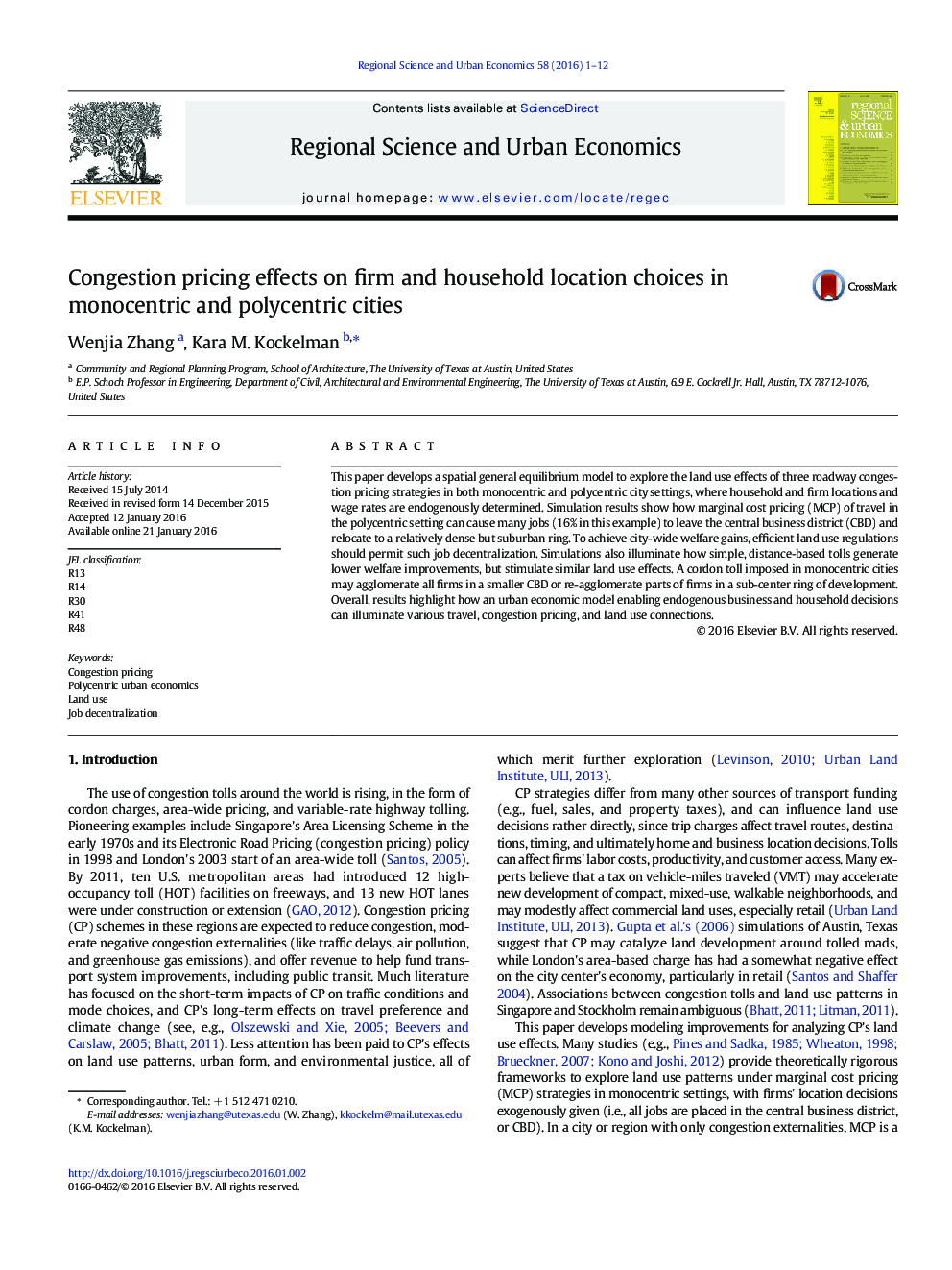| Article ID | Journal | Published Year | Pages | File Type |
|---|---|---|---|---|
| 980459 | Regional Science and Urban Economics | 2016 | 12 Pages |
•We build a nonmonocentric model allowing for endogenous emergence of polycentricity and traffic congestion.•We compare the no-toll policy to marginal cost pricing (MCP), distance-based tolls and a cordon toll.•Efficient land use regulations for reducing congestion should permit job decentralization.
This paper develops a spatial general equilibrium model to explore the land use effects of three roadway congestion pricing strategies in both monocentric and polycentric city settings, where household and firm locations and wage rates are endogenously determined. Simulation results show how marginal cost pricing (MCP) of travel in the polycentric setting can cause many jobs (16% in this example) to leave the central business district (CBD) and relocate to a relatively dense but suburban ring. To achieve city-wide welfare gains, efficient land use regulations should permit such job decentralization. Simulations also illuminate how simple, distance-based tolls generate lower welfare improvements, but stimulate similar land use effects. A cordon toll imposed in monocentric cities may agglomerate all firms in a smaller CBD or re-agglomerate parts of firms in a sub-center ring of development. Overall, results highlight how an urban economic model enabling endogenous business and household decisions can illuminate various travel, congestion pricing, and land use connections.
